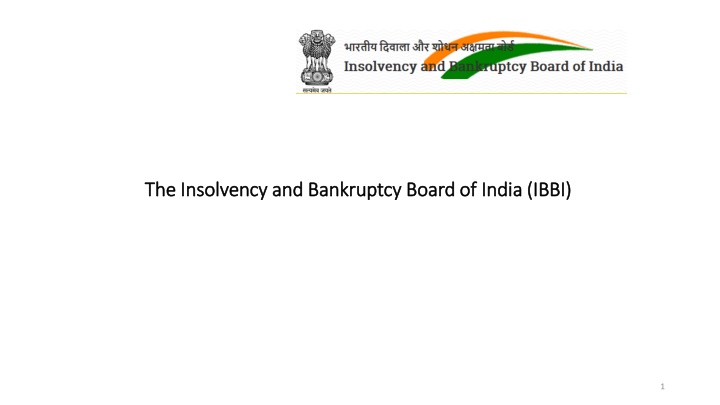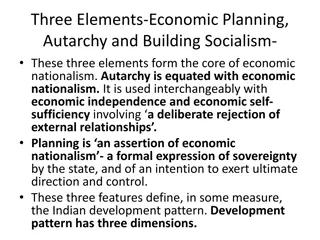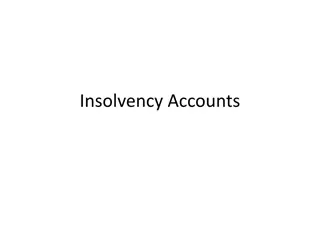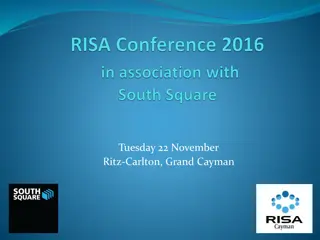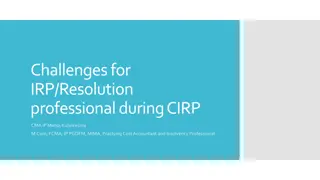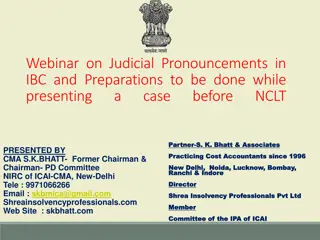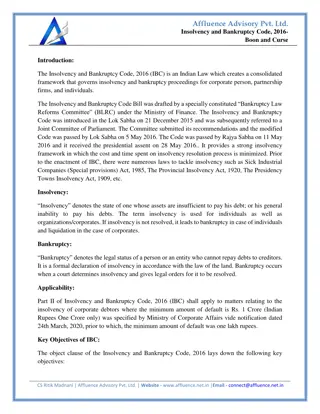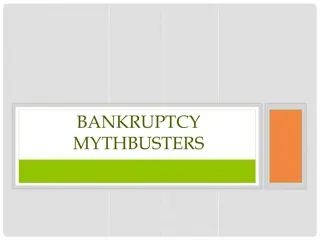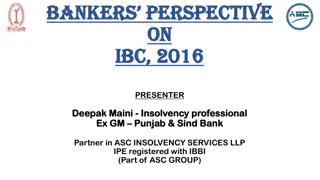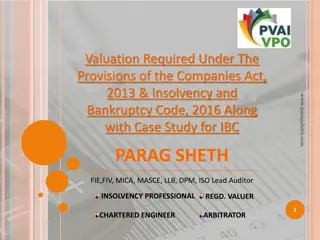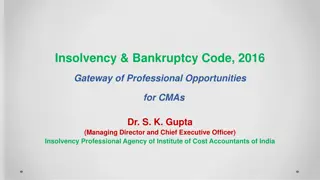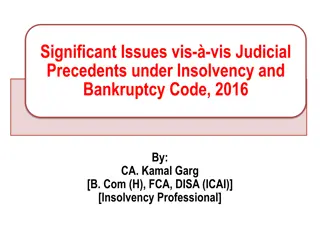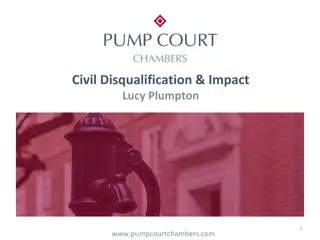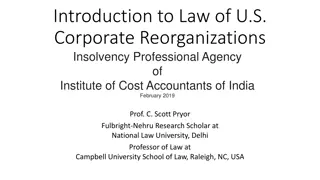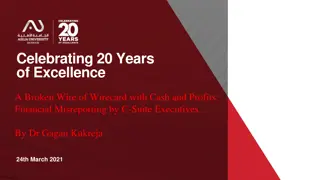Insolvency and Bankruptcy Code: Economic Rationale and Key Features
The Insolvency and Bankruptcy Code (IBC) in India was initiated to address economic challenges, streamline insolvency resolution, and improve the ease of doing business. It aims to maximize asset value, promote entrepreneurship, ensure credit availability, and balance stakeholder interests effectively. The code features comprehensive provisions for corporate and individual insolvency, emphasizing early resolution and creditors' involvement to expedite the process.
Download Presentation

Please find below an Image/Link to download the presentation.
The content on the website is provided AS IS for your information and personal use only. It may not be sold, licensed, or shared on other websites without obtaining consent from the author.If you encounter any issues during the download, it is possible that the publisher has removed the file from their server.
You are allowed to download the files provided on this website for personal or commercial use, subject to the condition that they are used lawfully. All files are the property of their respective owners.
The content on the website is provided AS IS for your information and personal use only. It may not be sold, licensed, or shared on other websites without obtaining consent from the author.
E N D
Presentation Transcript
The Insolvency and Bankruptcy Board of India (IBBI) The Insolvency and Bankruptcy Board of India (IBBI) 1
Agenda Economic rationale behind instituting a bankruptcy regime Institutional architecture of Insolvency and Bankruptcy Code (IBC), 2016 Role of IBBI under IBC, 2016 Progress made so far Things to look forward to in future 2
Economic rationale Low ease of doing business ranking Budget speech on 28th February, 2015 stated bankruptcy law reform as a key priority for improving the ease of doing business 1. India is 142nd in World Bank's "Ease of Doing Business" rankings for 2015 - She is 137th on insolvency resolution ranking, with: - an avg. of 4.3 years for resolving insolvency, and - a recovery rate of 25.7% 2. The Insolvency and Bankruptcy Code, 2015 was introduced in the Parliament on 21st December, 2015 3. After due process, the Insolvency and Bankruptcy Code (IBC), 2016 was enacted on 28th May, 2016 Poor credit environment 3
The Insolvency and Bankruptcy Code (IBC), 2016 Preamble The Preamble of the Insolvency and Bankruptcy Code describes the basic functions of the Insolvency and Bankruptcy Code as- "...to consolidate and amend the laws relating to reorganization and insolvency resolution of corporate persons, partnership firms and individuals in a time bound manner for maximization of the value of assets of such persons, to promote entrepreneurship, availability of credit and balance the interests of all the stakeholders including alteration in the order of priority of payment of Government dues and to establish an Insolvency and Bankruptcy Board of India, and for matters connected therewith or incidental thereto." 4
Salient features of IBC, 2016 A comprehensive, modern and robust insolvency and bankruptcy code (not an Act) that: consolidates and amends the laws relating to reorganization and insolvency resolution of corporate persons, partnership firms and individuals deals with four main transactions: i. Corporate Insolvency ii. Corporate Liquidation iii. Individual Insolvency iv. Individual Bankruptcy separates commercial aspects of insolvency and bankruptcy proceedings from judicial aspects moves to a more objective trigger of default in payment for early initiation of the insolvency process moves away from the debtor-in-possession regime to a creditors-in-control regime empowers the stakeholders to get resolution plan approved with in given timeline failure to reach the resolution triggers automatic liquidation process 5
The four pillars of IBC Service Providers 1 2 4 3 Insolvency Professionals (IPs) Regulator - IBBI (Board) Adjudicating Authorities Information Utilities (IUs) A financial regulator with over-sight of the service providers and regulations various under IBC. A new industry which stores and make authentic required to various transactions under the Code efficiently and expeditiously. The authorities, National Company Law Tribunal (NCLT) and Debt Recovery Tribunal (DRT) for corporates individuals respectively and their bodies, namely, NCLAT and DRAT. adjudicating namely, A class of regulated persons, who assist the stakeholders in conduct of insolvency and bankruptcy process. available information carry write govern to transactions out and IPs membership Professional Agencies (IPAs). IPAs are also regulated by IBBI. are registered from through Insolvency appellate The Service Providers are regulated by IBBI 6
Powers and functions of the Board The board has following three key functions: Registers and regulates the Service Providers Lays down regulations related to insolvency and bankruptcy process Statistical and Research Activities 7 Comprehensive information about powers, roles, and responsibilities of IBBI can be found at -> www.ibbi.gov.in>ABOUT US>Powers and Functions of the Board
Work done so far The following institutional infrastructure are in place under IBC: NCLT with 11 benches and NCLAT Insolvency and Bankruptcy Board of India (IBBI) The following work has been done by IBBI so far: Notification of 9 regulations and 2 rules by MCA 977 insolvency professionals with limited period registration Conduct of Limited Insolvency Examination and registering 300 IPs with regular registration Three Insolvency Professional Agencies One Information Utility (In principle approval only, yet to be registered), and Two Advisory Committees and One Technical Committee set up by the IBBI 8
Next on agenda key milestones Operationalization of Information Utilities Regulations for Individual insolvency and bankruptcy Operationalisation of cross-border insolvency provisions National Insolvency Examination 9
Thank you Please visit http://ibbi.gov.in for more information 10
